Alan: Thanks to my good friend John Tarantino for sending me this article.
Alan: I spent much of my youth with Sicilian Americans and other paisani from the south of Italy - most notably Calabresi and Campobassoans.
A Brief Overview Of Sicilian History
Over 2,500 years at a strategic crossroads of the western world have left Sicily with an unparalleled historical legacy.
Nowhere else have Phoenicians, Greeks, Romans, Byzantines, Arabs, Normans, French, Germans, Spanish, Italians and even British left such an indelible impression.
Whether you are more attracted by Greek temples, Roman villas and aqueducts, Norman cathedrals or Baroque churches, Sicily offers a range of historical sites that is not easily matched.
A timetable of the history of Sicily
20,000-750 BC Pre-Greek History
20,000-10,000: Paleolithic settlements. What's left to see: cave paintings at Levanzo and Addaura
4,000-3,000 Neolithic settlements in the east, pottery and tools found. What's left to see: remains displayed in museum on Lipari
3,000-2,000 The copper age: more settlers arrive from the Aegean. Evidence of cultivation, animal husbandry and trade.
2,000-1,000 The Bronze age, with significant Mycenaean influence. What's left to see: Capo Graziano and Punta Milazzese in Aeolian Islands.
1250 approx Ausonians move to the Aeolian Islands and the Sikels occupy the east and begin moving inland. Sicans (from North Africa) and Elymians (Trojan refugees) settle in West. What's left to see: Sikel necropolis in Pantalica.
900-700 Carthaginians (Phoenicians from eastern Mediterranean) replace the Mycenaean and settled Panormus (Palermo), Solunto and Mothya. What's left to see: Phoenician colonies at Mothya, Solunto.
750-215 BC - The Greeks
734 Colonisation of Naxos (near Taormina). Greeks begin to arrive in search of land in development of a wealthy “Magna Graecia”. Naxians followed by Megarians at Megara Hyblaea, Corinthians at Ortygia (Syracuse), Rhodians, Cretans and Cnidians at Gela. What's left to see: Taormina, Ortygia, Megara Hyblaea, Erice.
Mother Colonies start to form dependent city states. What's left to see: Agrigento, Selinunte, Segesta, Eraclea Minoa.
Sicily proves extremely fertile and olives and vines are introduced. Trade intensifies and Sicilian Magna Graecia becomes extremely rich. Internal rivalries lead to bloody war:
480 Battle of Himera: a rare alliance of Gela, Agrigento and Syracuse defeat the Carthaginians heralding the beginning of a “Golden Age”.450 Rebellion led by Ducetius (a Hellenised Sikel), quashed by Syracuse, confirming their power.
415-413 Athenian invasion (the Great Expedition) of Syracuse in support of Segesta against Syracusan Tyrants fails leaving 7000 Athenian soldiers in slavery.
Read more about the Greeks in Sicily:
264-211 BC - The Punic Wars
264-241 First Punic War: Romans use the Sikels against Carthage. What's left to see: Punic Ship at Marsala.
218-201 Second Punic war: Syracuse falls in 211 giving way to Roman rule
218 BC - 468 AD - The Romans
44 Sextus Pompey seizes Sicily, interrupting grain exports and resulting in harsh retributions at his overthrow.
139-132 First slave revolt
104-100 Second slave revolt against Roman rule.
Forests are destroyed for shipbuilding and the resulting fields become “The Granary of Rome” or “the nurse at whose breast the Roman people is fed”. Relative calm reigns though many Greek temples are despoiled. The Roman sack of Sicily rises to its peak under the governorship of Verres, who Cicero prosecutes. Greek culture and language remain strong. What's left to see: grain fields in the interior, Villa Romana del Casale at Piazza Armerina, the "Roman" theatre at Taormina and the Roman theatre and amphitheatre in Catania.
Read more about the Romans in Sicily:
468-476 - The Vandals
468-476 Vandals (of Germanic origins) invade from North Africa
476-535 - The Ostrogoths
476-535 Ostrogoths rule Sicily
535-827 - The Byzantines
535 - The Byzantines (under Belisario) occupy Sicily and are embraced by a still very strong Greek culture.
663 - Syracuse briefly replaces Constantinople as the capital of the Byzantine empire.
700 approx - Pantelleria occupied by Moors
827-1061 - The Arabs
827 - Beginning of Arab invasion with landing of 10,000 Arabs, Berbers and Spanish Muslims (collective term Saracens) at Mazara del Vallo.
832 - Arabs conquer Palermo making it their capital. Palermo becomes one of the most populous and cosmopolitan centres in the world. Trade flourishes, sophisticated irrigation systems built. Taxes reduce and an era of religious tolerance begins. What's left to see: Place names (Calta…., Gibil….), Citrus trees, Sugar Cane. Thermal Baths at Cefala' Diana.
878 - Arabs conquer Syracuse.
1038 - Byzantines attempt to exploit Arab feuding as General George Maniakes tries to bring Sicily back under the influence of Constantinople.
Read more about the Arabs in Sicily:
1060-1194 - The Normans
1059 - Pope Nicolo' II authorises the Hauteville family of Normans (present in Calabria and Puglia) to occupy any area of Southern Italy as long as they don’t recognise the power of Constantinople.
1064 -Norman Roger Hauteville invades Messina in response to a call for help from the Arabs against the Byzantines.
1071 - Normans take Palermo following a six month naval blockade. What's left to see: S. Giovanni dei Lebbrosi (Palermo).
1071 onwards - the Normans take possession of Sicily, but they are few so have to accept and integrate Arab administration and justice systems. They make use of Arab and Byzantine craftsmen and architects provoking a fusion of talent and leaving an incredible legacy of art and architecture. Arabic is replaced by French and Italian and the clerical hierarchy is Latinised bringing 1,500 years of Greek influence to an end. What's left to see: Norman Palace and Palatine Chapel in Palermo. Fortifications all over the Island. The castle at Erice.
1130-1154 - King Roger II extends huge influence over the Mediterranean region. What's left to see: Cefalu Cathedral; S.Giovanni degli Eremiti, Martorana and Magione churches in Palermo.
1154-1166 - King William I (William the Bad) exploits his position and fails to control barons. Englishman Walter of the Mill became archbishop of Palermo. What's left to see: Palermo Cathedral; "La Zisa” (palace in Palermo).
1166-1189 King William II (William the Good) establishes second archbishopric at Monreale. What's left to see: Cathedral at Monreale. Royal Palace in Palermo.
1189-1194 Fast decline of Norman power following divisions after the death of William II (age 36). Roger II’s aunt marries Hohenstaufen Henry.
1190 - Richard I of England (Richard the Lion-Heart) stops in Messina on his way to the Third Crusade, sacking the city.
Read more about the Normans in Sicily:
1194-1266 - The Hohenstaufen (Swabians)
1194 - The Hohenstaufen arrive to little opposition and Henry VI is crowned King of Sicily. He is succeeded by Frederick II (Stupor Mundi) under whose reign poetry, science, law and medicine advance. After his death, the Pope sells Sicily to the King of England, who gives it to his 8 year old son Edmund of Lancaster. What's left to see: fortified castles in Milazzo, Catania (Castello Ursino) and Siracusa (Castello Maniace).
1266-1282 - The Angevin French
1266 - The French Pope deposes Edmund and gives Sicily to Charles of Anjou (brother of Louis IX). The Angevins oppress Sicily as no previous power has, (high taxes and division of baronial fiefs among French aristocrats), and are generally detested. 1282 - The Sicilian Vespers, a popular uprising killing thousands of French occupiers, pave the way for a new conqueror. What's left to see: the castle in Sperlinga (last refuge for defeated Angevins)
Read more about the Sicilian Vespers:
1282-1516 - The Aragonese
1282 - Peter of Aragon lands in Trapani and is acclaimed king at Palermo. The arrival of the Aragonese means the beginning of five centuries of Spanish domination and isolation from Italy and consequently from Europe. 1282-1302 - War of the Vespers between Aragonese and Angevins fought mainly on mainland Italy and in Spain. 1302 - Peace of Caltabellotta gives Sicily to the Aragonese and Mainland territories in Southern Italy to the French. 14th Century Ineffectual government with power in the hands of nobility. Black death decimates the population. 15th Century - Linked to Spain and cut off from Italian mainland (held by Angevins except for a brief period during reign of Alphonse II 1416-1458), Sicily becomes more isolated. With the discovery of America in 1492 Spanish attention shifts for good from the Mediterranean. Sicily falls under the control of corrupt nobility and the inquisition brings religious tolerance to an end. What's left to see: Chiaramonte and Catalan-Gothic villas in Palermo.
1516-1713 - The Spanish Habsburgs
16th Century - Isolation and misgovernment continues. Nobility reinforce the feudal system forcing peasants off the land and leaving estates in the hands of Massari or Gabellotti, bailiffs charged with collection of rent. Sicily is now essentially a source of funds for Spanish expansion. Discontent leads to rise of brigandry supported by oppressed population who find defence from prosecution in a code of silence, or “omertà”... the beginnings of the Mafia. What's left to see: Remains of fortified Masserie (farm estates) all over the agricultural interior. 17th Century Repression is compounded by disease and disaster as Sicily’s misery deepens under continuing Spanish misrule. Insurrection in the big cities is effectively and violently quashed. What's left to see: the main grid system of the old centre of Palermo. The Quattro Canti, Baroque churches. 1647 - Revolt of Palermo 1669 - Huge eruption of Etna destroys much around Catania. 1674-78 Revolt of Messina 1693 Earthquake and following plague destroys much of the east coast and kills 5% of the population. Followed by massive rebuilding programme, leaving some of the most spectacular Baroque architecture in Europe. What's left to see: Baroque architecture in Ragusa, Syracuse, Noto.1700 Charles II dies. 1713-1720 - Piedmontese. 1713 - Treaty of Utrecht following the death of Charles II of Spain gives Sicily to the House of Savoy.
1720-1734 - The Austrian Habsburgs
1720 - The House of Savoy trades Sicily with the Austrians for Sardinia.
1734-1806 - The Bourbons
18th Century The continuation of indirect Spanish rule through a pampered, parasitic and corrupt nobility results in increased oppression and virtual elimination of wealth production. Sicily is excluded from the revolutionary spirit of the French revolution. What's left to see: late Baroque palaces and churches all over Sicily. 1734 - Bourbon King Charles I (1734-59) reclaims Sicily for the Spanish 1740 John Woodhouse begins production and export of fortified wines at Marsala. “Woodhouse” Marsala wine label, now managed by Florio. What's left to see: various wineries in Marsala.1759 - Charles I becomes Charles III of Spain leaving Sicily to be governed indirectly by Ferdinand IV of Naples. 1799 - Napoleon invades Naples, forcing Ferdinand to flee to Palermo in Admiral Nelson’s flagship. Nelson is rewarded by the king with a large holding near mount Etna. What's left to see: Castel Nelson at Maniace.
1806-1815 - British Administration
1812 Lord Bentinck (commander of British forces) forces introduction of a two-chamber parliament based on British model. Abolition of feudal privileges. Increase in Malvasia wine production to supply Nelson's fleet, based in Messina.1815 Napoleon is defeated and the British abandon Sicily to the Bourbons.
Read more about the British in Sicily:
1815-1860 - The Bourbons
1815 Ferdinand returns to Naples and declares himself Ferdinand I of the Two Sicilies. British designed constitution is abandoned. Next 45 years Revolutionary spirit grows as Spanish rule becomes increasingly untenable. 1832 - a new island appears to the south of Sciacca and is simultaneously claimed by French, British and Bourbons. Named Ferdinandea by the Bourbons (after Ferdinand I of the Two Sicilies) and Graham Island by the British (after Sir James Robert George Graham of the Admiralty) the island disappered before war could be declared between the contesting powers. It now lies 8 metres below the surface and presents a significant shipping hasard.
1860-1946 - The unification of Italy (Monarchy)
1860 - Garibaldi begins unification of Italy having landed at Marsala on 11 May. Swift defeat of the Bourbons. Vittorio Emanuele of Savoy declared King. After unification Sicily is once again in the hands of a distant government. Old aristocracy maintained most privileges. Misgovernment, few voting rights, increased taxation and conscription lead to more discontent. 1866 - Revolt of Palermo quashed by Turin. 1886 - Ernesto Basile builds “il Teatro al Massimo” opera house in Palermo. What's left to see: Opera House and countless “Liberty” style buildings and Villas in Palermo, Mondello, Bagheria, and Sferracavallo.1891-94 Fasci Siciliani (workers organisations) achieve some improvements in land laws, but are quashed by 15,000 troop sent to Palermo by prime minister Francesco Crispi. 1908 80,000 killed in Messina earthquake. 1914 - Repression leads to frustration and mass emigration of peasants. Wage increases due to labour shortage. 1922-43 - Mussolini becomes prime minister. Cesare Mori imprisons 1,000s of Mafia suspects pushing criminals underground. 1930s Sicily is of essential strategic importance during Mussolini’s colonisation attempts in North Africa. 1943 - Following 6 weeks of bombing, allies land at Gela and Syracuse to begin liberation of Europe from Hitler’s Germany. Heavy damage to much of old Palermo and Messina.
Read more about the unification of Italy and the 2nd World War in Sicily:
1946-Today - The Italian Republic
1946 Sicily becomes an autonomous region of Italy 1951-1971 - 1.5 million people emigrate, mainly to Northern Italy, Germany and the USA. 1958 - Italy joins the European Union (then the Common Market) 1968 - Major earthquake in the Val di Belice. Remains of Gibellina and Poggio Reale.1986-1987 - “Maxiprocessi” against over 500 Mafia members. 1992 - Giulio Andreotti steps down as Prime Minister. 1992 - Mafia assassinations of Giovanni Falcone and Paolo Borsellino. 1993 -Arrest of Salvatore Riina (boss of bosses) in Corleone. Since 1993:
Mayors of Palermo, Catania and Syracuse started ongoing process of restoration of old town centres.The opening and maintaining of marine reserves and national parks to protect the rich flora and fauna.The formation of the “Etna Valley” industrial parks to promote the development of High tech and pharmaceutical companies. 1994 - Silvio Berlusconi’s first national government. 1997 - Agrigento and the Villa Romana del Casale become UNESCO world heritage sites. 1997 - The Teatro Massimo (the third largest opera house in Europe) reopens in Palermo after 25 years of closure. 2000 - the Aeolian Island listed as UNESCO world heritage site. What's left to see: Aeolian Islands: Vulcano, Lipari, Salina, Panarea, Stromboli, Filicudi, Alicudi. 2001 - Berlusconi returns as Prime Minister of Italy with 100% of Sicilian seats. 2002 - The late Baroque towns of the Noto Valley have been listed as World Heritage sites by UNESCO. What's left to see: Noto, Ibla, Scicli, Modica, Ragusa, Caltagirone, Militello Val di Catania, Catania, Palazzolo Acreide.
.jpg)
.jpg)
.jpg)
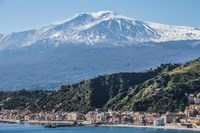
.JPG)
.jpg)
.jpg)

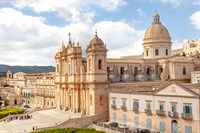
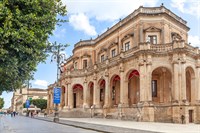
.jpg)
.JPG)

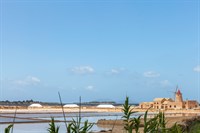
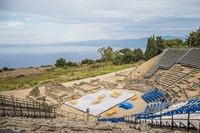




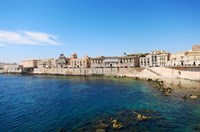
e.jpg)
3x2.jpg)
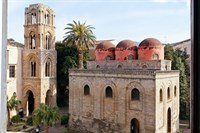
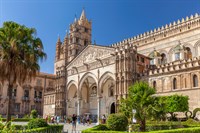
.JPG)
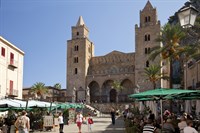
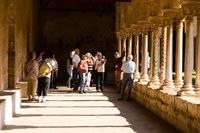
.JPG)
.JPG)

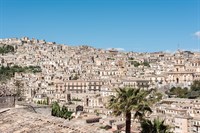


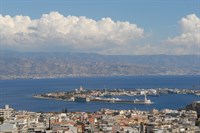
.JPG)
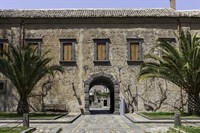
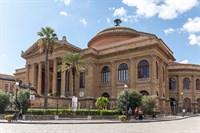
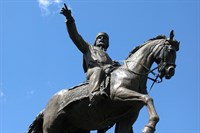

My Name is Dr Aziba you can Contact Me via Email Priestazibasolutioncenter@gmail.com For Penis Enlargement Product to help you get as long as 13inches Long with good Erection. Contact Me Via Email : Priestazibasolutioncenter@gmail.com Via WhatsApp: +2348100368288 .
ReplyDelete